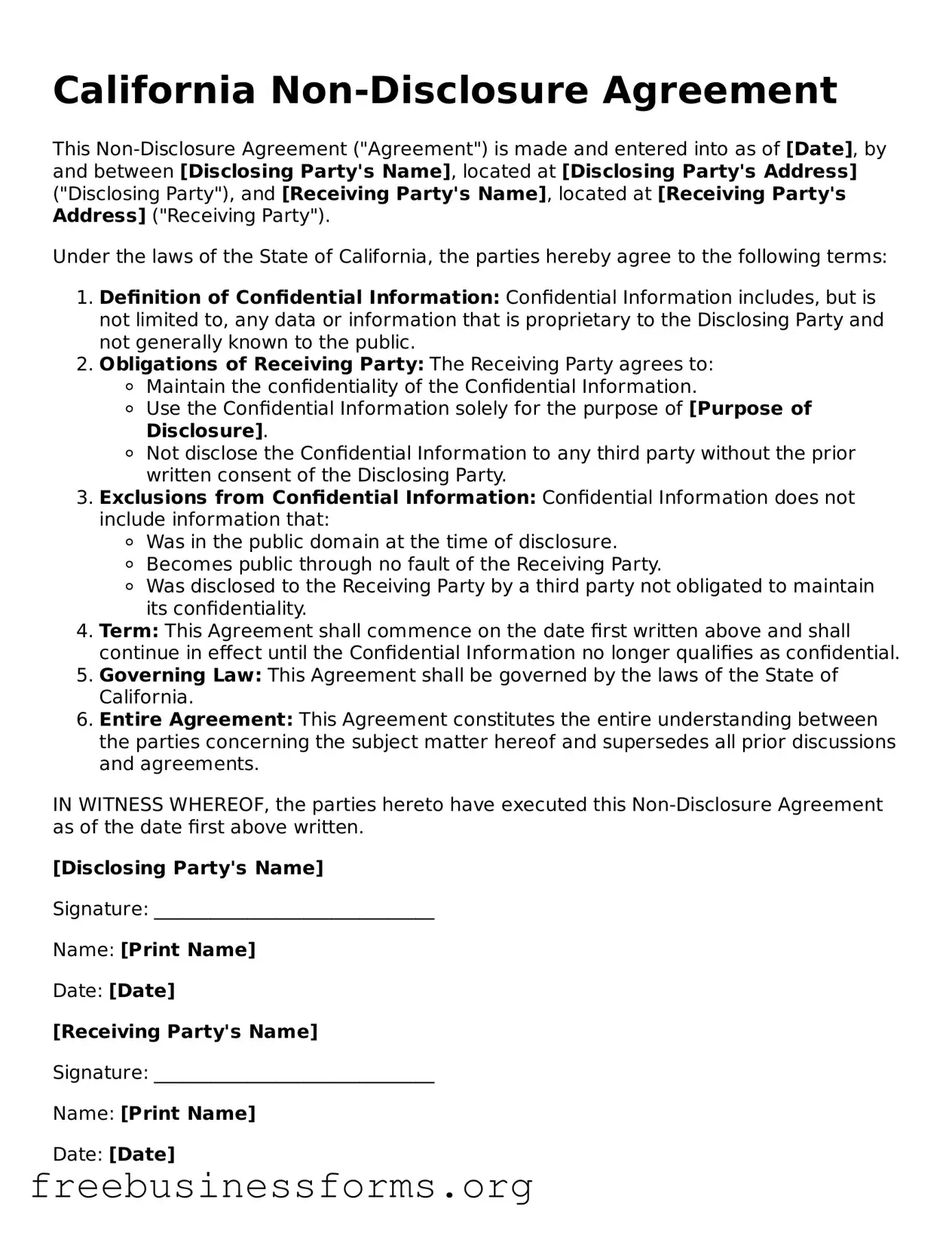California Non-Disclosure Agreement
This Non-Disclosure Agreement ("Agreement") is made and entered into as of [Date], by and between [Disclosing Party's Name], located at [Disclosing Party's Address] ("Disclosing Party"), and [Receiving Party's Name], located at [Receiving Party's Address] ("Receiving Party").
Under the laws of the State of California, the parties hereby agree to the following terms:
- Definition of Confidential Information: Confidential Information includes, but is not limited to, any data or information that is proprietary to the Disclosing Party and not generally known to the public.
- Obligations of Receiving Party: The Receiving Party agrees to:
- Maintain the confidentiality of the Confidential Information.
- Use the Confidential Information solely for the purpose of [Purpose of Disclosure].
- Not disclose the Confidential Information to any third party without the prior written consent of the Disclosing Party.
- Exclusions from Confidential Information: Confidential Information does not include information that:
- Was in the public domain at the time of disclosure.
- Becomes public through no fault of the Receiving Party.
- Was disclosed to the Receiving Party by a third party not obligated to maintain its confidentiality.
- Term: This Agreement shall commence on the date first written above and shall continue in effect until the Confidential Information no longer qualifies as confidential.
- Governing Law: This Agreement shall be governed by the laws of the State of California.
- Entire Agreement: This Agreement constitutes the entire understanding between the parties concerning the subject matter hereof and supersedes all prior discussions and agreements.
IN WITNESS WHEREOF, the parties hereto have executed this Non-Disclosure Agreement as of the date first above written.
[Disclosing Party's Name]
Signature: ______________________________
Name: [Print Name]
Date: [Date]
[Receiving Party's Name]
Signature: ______________________________
Name: [Print Name]
Date: [Date]
